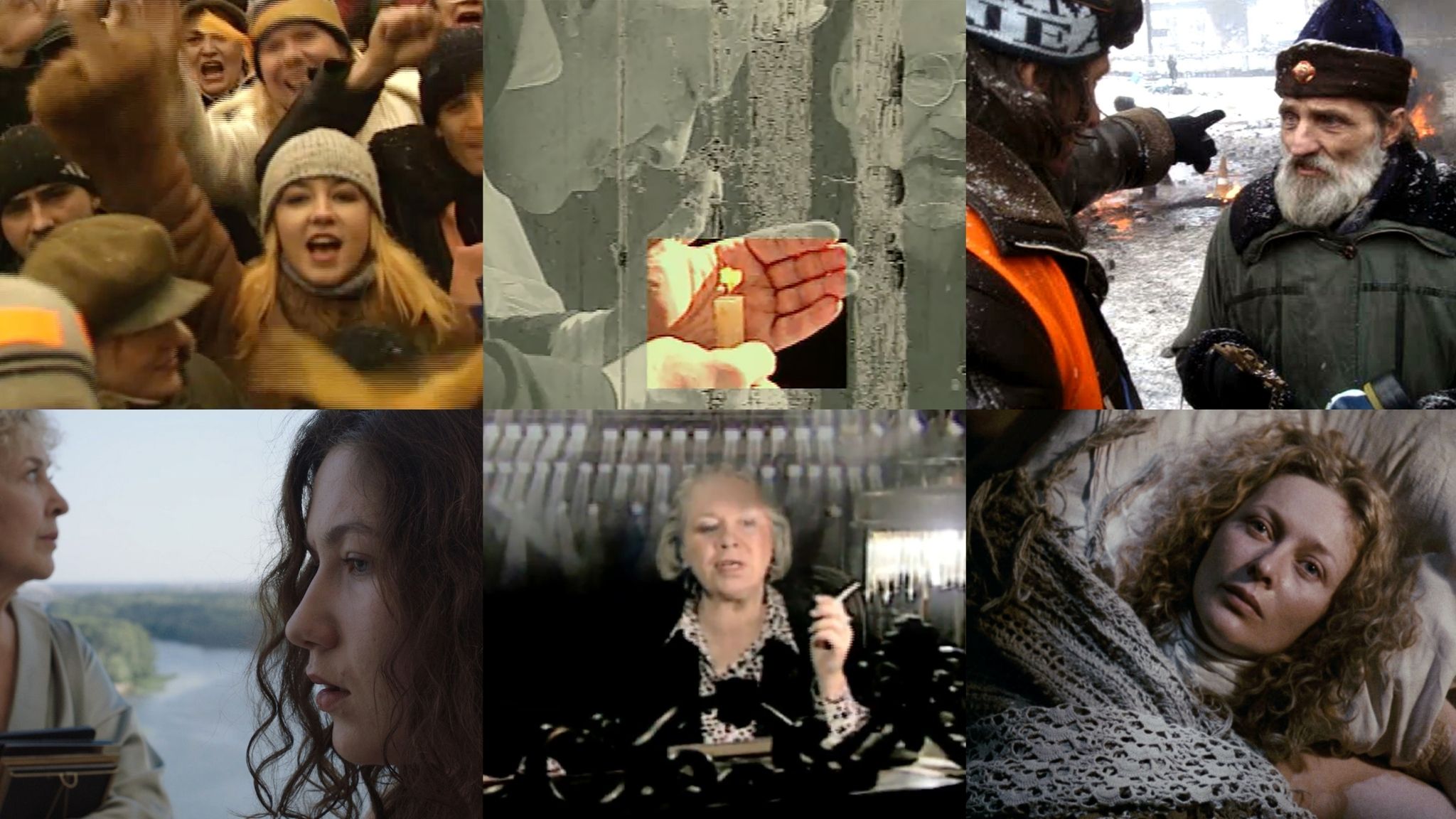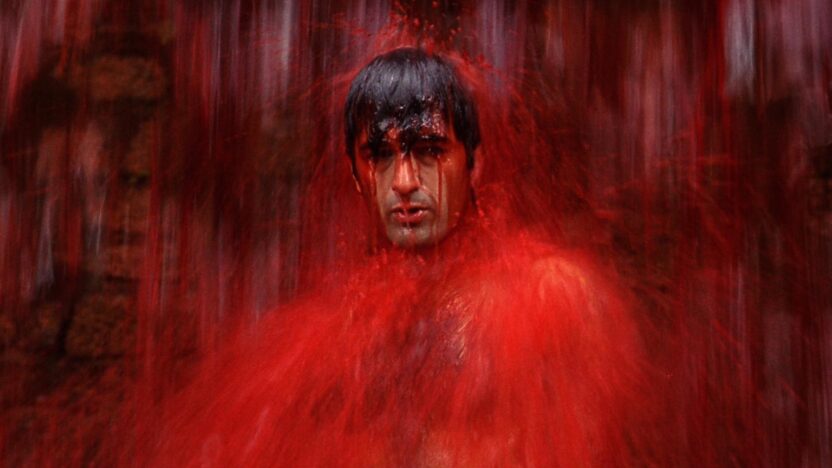The Political (Un)Consciousness
Thirty years after the premiere of his debut feature Josephine, the Singer and the Mice People Ukrainian artist Sergii Masloboishchykov returns to IFFR for a retrospective of his work. Film critic Sonya Vseliubska places his films within their historical and contemporary contexts, analysing their artistic and political significance.

Film and stage director, screenwriter, painter, graphic artist and teacher – Sergii Masloboishchykov’s cinema is distinguished by an ability to synthesise diverse artistic talents, while committed to reflection on important issues. His 13 films from over more than 30 years of filmmaking show Masloboishchykov has always placed quality and artistic freedom ahead of quantity of output. In light of the ongoing full-scale invasion of Ukraine, this retrospective rediscovers his overlooked work through a political prism. Masloboishchykov’s films are united by an incredible mix of documentation and an exploration of the political consciousness and unconsciousness of Ukraine, which gleam with realism, even in his most experimental form.
Masloboishchykov once said that by working across multiple artforms he is fulfilling his childhood dream. Having acted as a teenager, studied and then worked in fine arts and theatre, he always dreamt of cinema. Like many other talented Ukrainian filmmakers, he went to Moscow for his film education, which at that time remained the film epicentre of the Soviet sphere. Yet Masloboishchykov had an additional motivation – Roman Balayan, a master of Ukrainian cinema, was teaching screenwriting and directing there. His student films immediately establish an authorial style that can be read throughout his filmography. The Village Doctor (1988), an adaptation of heavyweight literature with a philosophical charge, exhibits a rejection of classical narrative development, experimental camerawork and rough editing. While The Different One (1989) added to that an interest in the psychology of society in unexplained moral disturbance. By the threshold of the 1990s, having shown his films at festivals and attracted the interest at home, Masloboishchykov had established himself as a promising auteur.
With the collapse of the Soviet Union, Ukrainian cinema entered a dramatic period. The coveted creative freedom, brought with it confusion in the absence of governmental support. Ukrainian cinema of the 1990s was characterised by a loose network of enthusiastic debutantes that searched for a new cinematic language of independence. One of the main works of this decade is Masloboishchykov’s masterpiece Josephine, the Singer and the Mice People (1994), which fully revealed his cinematic voice and cemented his interest in political (un)consciousness. Here, he returned again to Kafka, calling the film a musical and replacing songs with squeaks. Josephine, who combines an unearthly talent for healing singing, radiates unease from the burden of sensuality and her responsibility for the people. The anxiety of the era is reflected in the story of a society living in a vast theatre, so rife with problems and quarrels, that the desired immense space begins to frighten in its scale. Josephine was later read as a universal prophecy – of momentous political changes and the psychological condition of the country.
In the absence of a production and distribution systems, directors often found themselves working in television or went into related arts. While working in the theatre, Masloboishchykov also made documentaries for television. He brought completely original stories to the medium in unprecedented formats, raising questions about television as an art and the notion of auteurism in it. In The World of Sasha Shumovich (1997) and Lider (2000) he created documentary portraits of crucial people in his work – a cameraman and his inspiration for the stage. Based on interviews and archives, films do not reproduce a verified biography, but convey the philosophy of his heroes’ art through cinematic form. While in …from Bulgakov (1999) he creates a surreal portrait of the writer against the backdrop of his complex national identity, and in Two Families (2000) he tells the story of the kinship between the two cultural canons of Ukraine and Russia. These four different stories are united by approach to experimental storytelling, synthesising all the arts he possesses. Masloboishchykov combines documentary and fiction, using frame-in-frame technique, collaging, screen-splitting and layering. Most importantly, the narrator in these films is embedded in the frame, whatever happens in the distant layers of the mise en scène. Behind this rambling polyphony lies a clear political stance – an insistence on the plurality of voices and visions. Themes and images that seem to have no point of connection find their unity. They produce a conversation about Ukraine’s cultural heritage, identity and consciousness, always aware of the complexity of discourses, Masloboishchykov speaks in an equivalently complex cinematic language.
In 2002, he distanced himself from theatre to make a second feature, exposing his directorial intuition anew. The Noise of the Wind (2002) is a reinterpretation of Goethe’s poem about people oppressed by anxiety, which they cannot bear and cannot live without it either. Filmed in the Dovzhenko Studio, in the most depressing colour palette, the picture takes place in an elusive space of time. As in Josephine this anxiety is inexplicable, but its presence and the search for cause and effect, delivers a metaphysical presence. There is also the recurring theme of a dream, from which the characters either cannot or do not dare to wake up. The metaphorical noise that the wind brings is vivid, and becomes the herald of the change.
This awakening from the dream happened in the autumn of 2004, when the ‘Orange Revolution’ broke out as a result of Ukrainians’ disagreement to rigged elections. Masloboishchykov decided to document this dawning of political consciousness, using the forms of symposium and dialogue he had developed working in TV. Nevseremos! People of Maidan (2005) begins with the words “a cinematic attempt at dialogue”. By listening carefully to the opinions and positions of different Ukrainians from East to West, he initiates a dialogue, the acute lack of which was one of the discoveries of this revolution. Years later, when the Maidan gathered again to express its more acute dissent, Masloboishchykov’s camera delved only deeper. Ukrainian Argument (2014) begins with comparisons and contrasts of the two Maidans, and instantly comes to a consensus – everything was radicalised. By increasing the number of opinions from a more diverse range of people, he proves that the ‘Maidan’ is an initiative of the people, not as a crowd but as an assemblage of unique individuals. The escalation of political turmoil, in tandem with the escalation of documentary methods, is inextricable from Ukrainian cinema. The protest that escalated into a revolution, and then into a full-scale war, produces a continuum. His latest documentary Invasion (2023), a testimony of the occupation of Kherson region, can be attributed to this paradigm. The full-scale is reflected in the film language, which lies in the transmedial approach, where video of all kinds are used.
Once Ukraine entered a protracted war and began to talk more about its national identity and decolonisation, he made his most sensual film, Own Voice (2016). An extremely evocative title for a documentary about the ancient Ukrainian choir ‘Shchedrik’, and even more evocative of Masloboishchykov’s style. The politics of the film lies in its immersion in culture, a way of reflecting on the value of the Ukrainian voice and its heritage. Here, dialogue is replaced by singing, where the voices of the older and younger generations merge in unifying song. The director’s curiosity is directed towards the younger generation who will carry this voice forward.
After a long break in fiction filmmaking working in theatre Masloboishchykov made Yasa in 2024. His greatest film in every sense of the word, the film tells the story of two women of different generations, united by the grief for a common loved one, who was killed in the Revolution of Dignity, is a great psychological analysis of Ukrainian society. While the film was made before the full-scale invasion, it is now more relevant. In Yasa, there is an apocalyptic image when the heroine observes war in the heart of Kyiv through a panoramic window. To call Masloboishchykov a prophet would be a gross oversimplification. This power of his intuition comes from years of personal political awareness and his ability to sense the unconscious of society and translate it onto screen, which makes him a unique filmmaker in the history of Ukrainian cinema.
written by Sonya Vseliubska
A list with articles
-

Get in the IFFR 2026 mood with these films by returning filmmakers on IFFR Unleashed
Published on:-
Unleashed
-
-

From Rotterdam to Rijeka: Igor Bezinović on the journey of Tiger-winner Fiume o Morte!
Published on:-
Interview
-
News
-
-

